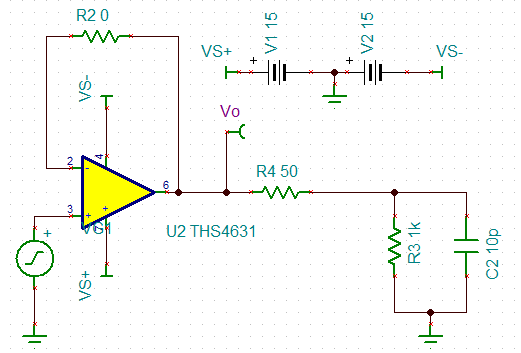Other Parts Discussed in Thread: TINA-TI, , THS3062
Dear TI expert,
I have some problems about loop gain calculations of op amps by TINA-TI.
1.I see this slide Fig1(the resolution is poor) in that video on the website
training.ti.com/ti-precision-labs-op-amps-stability-3. They all break the loop from the op amp’s output. And I wonder what are the right ways to measure the loop gain for CFA?
Fig1
2.Fig2 is from THS4631’s datasheet(pp5/34, Figure6). I test the closed-loop transfer function under Fig2’s condition. And I find that with an isolation resistance 10ohms, the closed-loop transfer function will have no peaking even with 100nF load capacitor. Can you please show me the correct result or just offer me the correct simulation circuits for this?
Fig2
3.I want to implement analog proportion-integration regulator with high speed op amp. If I choose VFA, its gain bandwidth product will be 350MHz, and supply voltage are greater than ±15V.For the sake of performance, what do you recommend? VFA or CFA, which is better for this application?
Best regards!
Yatao





